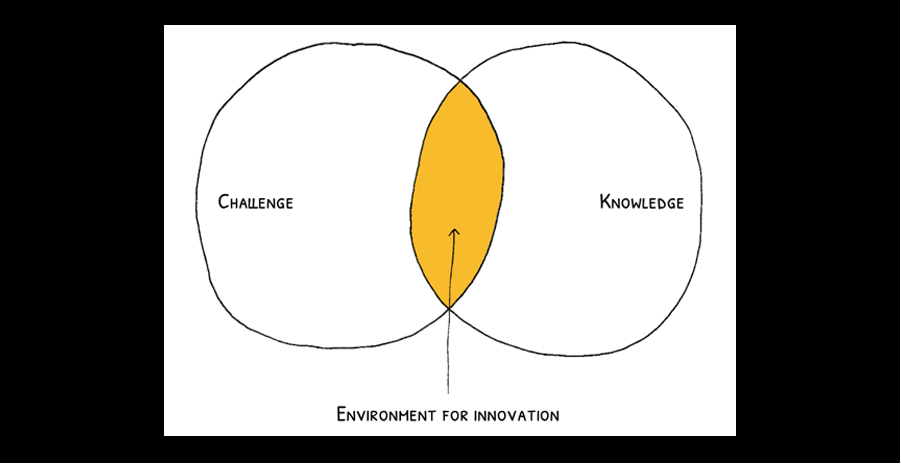Innovative Strategies That Drive Business Success
Discover how top companies like IKEA, Ford, and Google harness innovation to drive growth, tackle challenges, and promote creative collaboration.
Innovation is considered the backbone of many companies to survive in international competition. It is based on a simple recipe and at the same time, it is so difficult to establish. Innovation emerges almost incidentally.
When IKEA designed the Trådfri lamp system, they used insights from a three-year study of how people live in their homes. IKEA recognized that residents use their dining table as both a place to work and a place for leisurely meals. This different use places different demands on the required lighting.
As a result, IKEA developed a lighting solution that allows the temperature of the light to be changed using an intuitive remote control. This might seem like a simplistic example, but understanding the challenges users faced was the key to filtering the signals from the noise and ultimately designing a successful product line.
Another very impressive example of the spirit of innovation comes from Ford: In the early days, every car was built in one place. Factory workers came to the respective car with the necessary parts. According to our current understanding, it is enormously inefficient and slow.
A Ford employee visited a slaughterhouse one day and discovered that a dismantling line was being used there. The animals were moved along a track and workers cut out their specific parts. From this site the idea of building cars, in the same way, was born: the car drives and the workers stay with their parts.
As a result, a test factory was set up and barely ten years later, half of all cars in the world were from Ford. Here, newly acquired knowledge combined with the daily challenges led to a unique path.
Innovation cannot be forced
One can see from the examples that innovation arises almost incidentally when the daily challenges overlap with the knowledge of the employees.
Innovation cannot be forced – it happens when the conditions are right. As a company, you can actively contribute to improving the starting position for innovation by increasing the size of both circles.
The Google Recipe for Innovation & Speed
Google’s approach to innovation and speed is essentially based on two pillars: The “Googly Mindset” and the “Tech Foundation”. In public perception, technology appears as the driver for innovative concepts and new services of all kinds.
Radical new technologies such as MapReduce, containers, Kubernetes, and TensorFlow are just a few examples. At their core, however, all these ideas emerged from a culture of intensive collaboration – for which there is a separate word created internally – Googleyness. This includes some fundamental approaches or a basic understanding:
- The fast and constant testing of new ideas with minimal use of resources,
- creative thinking as the basis of 10X,
- a cross-border collaboration as well
- psychological security.
Design sprints as a framework
In concrete terms, this means that Google relies heavily on design sprints for internal development, which represents a concept or framework that was developed at Google Ventures. The method is now known as prototyping and is typically used in “lean startups” to identify “product-market fit”.
This approach is probably better known under the narrative: “Fail fast / learn fast” or also: “Start and iterate, fail/learn fast / celebrate mistakes”. Google uses this approach internally under the name “Eat your dog food” by making all products and services available to its own employees months in advance for testing and, above all, for giving feedback.
Creative thinking with Design Thinking
In the area of creative thinking, Google relies fully on design thinking and also a specially developed framework: A key to the creative thinking process is so-called divergent thinking or 10x thinking – which means disrupting our autopilot brain.
Because problems can never be solved with the same mindset that created them. Therefore, Google’s approach is not to improve things by 10 percent – but to make it possible to improve things 10 times as much by using radical new technologies.
Collaboration as a cornerstone of the culture of innovation
Collaboration is one of the most important cornerstones of a successful culture of innovation. This also includes recognizing the achievements of others. Google has an official system for “peer-to-peer recognition” – anyone can give anyone a bonus.
For example, the extra mile, the support, or the preliminary work on a project can be recognized in an officially recognized way at the same hierarchical level. This is considered extremely motivating.
Read Also: How is using a restaurant supply store beneficial?
Allow and encourage innovation
Colleagues and employees can be involved in a peer review during the performance appraisal. Colleagues can use this to highlight achievements and support promotions.
This is how Google rewards integrators. Another aspect of a successful collaboration is “Acting like owners”: New products and services have built-in feedback mechanisms everywhere.
Proposals for changes, e.g. errors in public documentation, can be sent directly to the underlying source with a button. A direct feedback channel promotes further developments and empowers the (product) owner.
Additionally, understanding that “the whole is greater than the sum of its parts” is critical to effective Google teams. Googlers help Googlers. Be it in 20 percent of projects, with questions in projects, or the development of complex applications.
A consequence of this is that teams can focus on innovations at their abstraction level. App teams focus on apps. Infrastructure teams focus on infra. etc. Each department can rely on the sphere of action and responsibility of the other departments.
If your project fails, you’re still part of the company
The best-performing teams are those that actively live “psychological security”, especially in times of uncertainty and change. Above all, this requires that the teams concentrate on facts. When mistakes happen, they make it clear that no one is personally to blame. Blameless postmortems are often written by the ones who made mistakes.
The focus is therefore not on the person, but on why the process allowed the error to occur. This means that projects are allowed to fail. The organization can learn from this and build trust. However, the project manager or the participants are not “the project”. A failed project does not mean that the project manager failed.
However, the two most important aspects of psychological safety are having a long-term perspective and having a common mission. It is crucial that people feel they belong. Without that certainty, it’s too easy to stray to the side of risk aversion and move too cautiously and slowly.
Innovation requires the right culture
Innovation requires the right skills, but above all the right mindset and the will to iterate quickly and try new things. True innovation can only happen when you are fully aware of the challenges you are facing.
As you learn new tools and skills and seek and accept new perspectives. Above all, however, you must create an environment in which a culture of error can be established and company-wide collaboration is valued.








